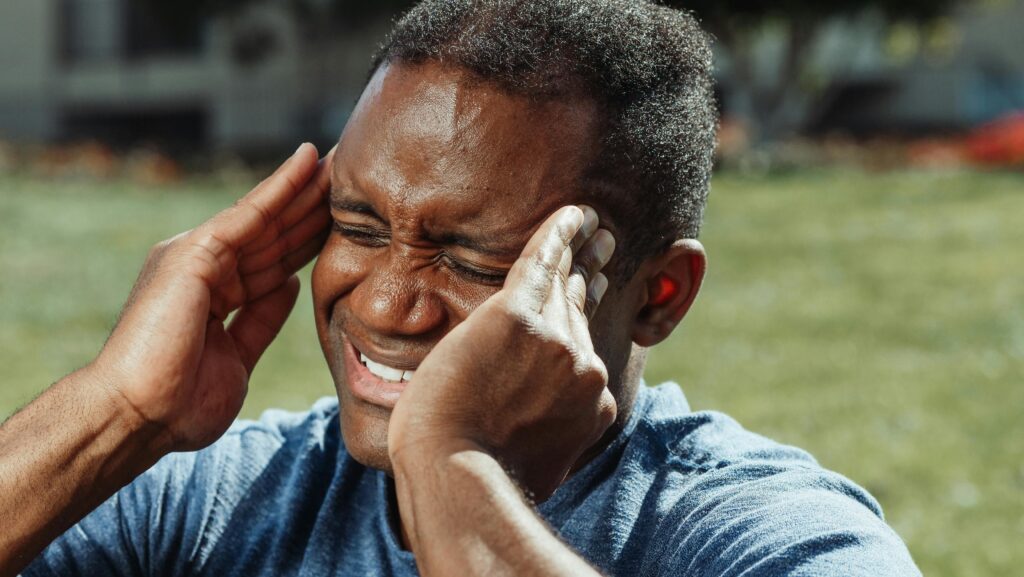
Hallucinogens are a group of psychoactive substances that significantly alter an individual’s perception, cognition, and emotions. These drugs often lead to hallucinations—intense sensory experiences that feel real but are generated by the mind. They disrupt normal brain function, especially by interfering with serotonin, a neurotransmitter that plays a key role in mood regulation, sensory perception, and thought processes.
While some people use hallucinogens recreationally for introspection or escapism, others may take them for spiritual or religious experiences. However, repeated use can lead to psychological dependence or even addiction, where the user persists in consuming the substance despite experiencing negative physical, mental, or social consequences.
At Willow Springs Healing Center, we offer compassionate, holistic care for those affected by hallucinogen addiction. Continue reading to better understand these substances and how we support recovery.
Also known as psychedelics, hallucinogens are drugs that cause profound changes in how users experience the world around them. These substances can trigger hallucinations—seeing, hearing, or feeling things that don’t exist—and can drastically distort a person’s sense of time, space, and self. The altered state caused by these drugs is commonly referred to as a “trip.”
Tripping can be vastly different for each person. Some may find it euphoric or enlightening, while others experience confusion, anxiety, or fear. A common effect is feeling disconnected from one’s body or surroundings, which can be dangerous, increasing the risk of accidents or injury due to a warped sense of reality.
Hallucinogens may be naturally occurring in plants or fungi, or they can be chemically synthesized. Regardless of their source, these substances typically:
Hallucinogens generally fall into two main categories: classic hallucinogens (psychedelics) and dissociative drugs. Classic hallucinogens evoke intense sensory hallucinations, while dissociatives not only do so but also create a profound sense of detachment from the self or the environment.

Addiction to hallucinogens can have a deeply disruptive effect on every facet of a person’s life—damaging physical well-being, emotional balance, and interpersonal relationships. Though often considered less habit-forming than other substances, consistent or high-dose use can result in psychological dependence and a series of harmful consequences.
The dangers associated with these substances reach far beyond the hallucinatory episodes themselves. Hallucinogens alter brain function, diminish cognitive abilities, and can leave lasting scars across multiple areas of life. Below, we explore the physical, emotional, and social toll of prolonged hallucinogen use.
Hallucinogen addiction can produce a wide range of physical effects, from acute side effects to long-term health complications. One of the most serious concerns is the unpredictability of hallucinations, which can lead to reckless behavior, accidental injuries, or self-harm.
Dissociative drugs like PCP and ketamine often cause numbness, dizziness, and impaired motor function—making users more prone to falls and accidents. Classic psychedelics such as LSD and psilocybin can elevate heart rate, blood pressure, and body temperature, posing serious risks to individuals with underlying cardiovascular conditions. In extreme cases, seizures, dehydration, or dangerous drug interactions can occur.
Chronic use may also lead to persistent physical issues. For instance, frequent PCP use is linked to speech impairment, memory deterioration, and muscle stiffness. Prolonged ketamine use can result in a condition known as “ketamine bladder syndrome,” characterized by pain and potential long-term damage to urinary organs.
Another troubling outcome is hallucinogen persisting perception disorder (HPPD)—a condition where individuals continue to experience visual anomalies, such as flashes or trailing images, long after their last drug use. These ongoing disturbances can sap energy, interfere with daily functioning, and strain overall health, particularly in the absence of treatment.
The mental health consequences of hallucinogen addiction are just as significant as the physical risks. These drugs interfere with neurotransmitters like serotonin, often leading to problems with memory, focus, and cognition.
Mood disturbances are common, with many individuals reporting heightened anxiety, paranoia, or depressive symptoms. A single negative experience—or “bad trip”—can provoke overwhelming fear, panic attacks, or suicidal ideation. In some cases, ongoing use can result in persistent psychosis, where hallucinations and delusional thinking continue long after the drug’s effects should have ended.
Feelings of emotional disconnection or numbness—referred to as dissociation or depersonalization—are also frequently reported. These experiences can lead to a sense of detachment from reality, making users feel isolated or as though they’re observing life from a distance.
For individuals with existing mental health conditions such as bipolar disorder or schizophrenia, hallucinogens can exacerbate symptoms or trigger episodes more frequently. The combination of unstable emotions and impaired judgment can make everyday responsibilities and interactions increasingly difficult to manage.
The effects of hallucinogen addiction often spill over into social and professional spheres. As the addiction progresses, individuals may begin isolating themselves—pulling away from family, friends, and social activities. Emotional instability and altered perception can make communication and relationship-building extremely challenging.
Career performance, schoolwork, and basic daily tasks frequently decline as the addiction consumes more time and focus. This can lead to job loss, academic setbacks, and financial difficulties that further compound the stress of addiction.
Poor decision-making while under the influence may also result in high-risk behaviors—such as unsafe sex, reckless driving, or involvement in criminal activities—which can have legal and reputational consequences.
Over time, as relationships erode and support systems fall away, the sense of loneliness and alienation deepens. This social isolation often reinforces the cycle of addiction, making the path to recovery seem even more distant and difficult to reach.

Detecting hallucinogen addiction can be challenging, largely because these drugs affect each person differently and often unpredictably. However, there are several common red flags—spanning physical, behavioral, and psychological domains—that can suggest a growing dependency.
While traditional psychedelics like LSD and psilocybin are less likely to produce physical withdrawal symptoms, dissociative drugs such as PCP and ketamine are more prone to fostering addictive patterns and psychological dependence.
Long-term or frequent hallucinogen use can trigger a variety of physical symptoms, some of which appear during intoxication, while others may persist well after the drug’s effects fade. These symptoms can disrupt a person’s health, physical performance, and ability to carry out everyday activities.
Addiction tends to influence how people behave—shifting how they relate to others, fulfill obligations, and conduct their daily routines. Behavioral warning signs can include:
Because hallucinogens directly affect brain function, chronic use often leads to serious mental and emotional consequences. Common psychological symptoms include:

Overcoming hallucinogen addiction involves a personalized, holistic treatment strategy that blends medical care, psychological support, and lifestyle transformation. While hallucinogens typically don’t produce the same physical dependency as substances like opioids or alcohol, they can still lead to intense psychological addiction.
Successful treatment emphasizes emotional healing, behavioral change, and addressing any lingering mental health effects caused by drug use. With the right support and dedication, lasting recovery is entirely within reach.
Although physical withdrawal symptoms from hallucinogens are usually mild, individuals often face emotional disturbances such as anxiety, depression, or residual hallucinations during the initial phase of recovery.
For those who have developed a dependency on dissociative hallucinogens like PCP or ketamine, medically supervised detox may be essential. These substances can cause more pronounced withdrawal symptoms, including disorientation, restlessness, and intense cravings. In a clinical detox environment, medical professionals monitor vital signs, manage symptoms, and may administer medications to reduce agitation, anxiety, or psychotic symptoms—ensuring a safer, more comfortable transition into sobriety.
At Willow Springs Healing center, we offer customized detox placement services to fit the needs of each individual.
Because hallucinogen addiction is largely rooted in psychological and behavioral patterns, therapy is a cornerstone of effective treatment. Evidence-based approaches help individuals understand their substance use, develop new coping tools, and rebuild healthier lives:
Many people struggling with hallucinogen addiction also face mental health challenges like anxiety, PTSD, depression, or schizophrenia. When these conditions go untreated, the likelihood of relapse increases.
Dual diagnosis treatment addresses both the addiction and the co-occurring mental health issues simultaneously. This approach may include therapy, medication management, and holistic support to promote emotional stability and long-term recovery.
Choosing the right level of care depends on several factors, including the severity of the addiction, co-occurring mental health conditions, and the individual’s support system.
Connecting with others in recovery can be incredibly empowering. Peer support groups offer community, encouragement, and shared wisdom that strengthen long-term sobriety.
Engaging with a supportive network reduces isolation and provides real-life strategies for staying sober.
Sustained recovery involves more than stopping drug use—it’s about building a life that nurtures physical, emotional, and spiritual well-being.
Recovery is an ongoing process that thrives on preparation, self-awareness, and continuous support. Building strong relapse prevention skills is crucial for long-term success.

If you or someone you love is facing the challenges of hallucinogen addiction, know that you don’t have to go through it alone. At Willow Springs Healing Center, we offer compassionate, expert care through flexible outpatient programs at our Concord, MA location.
Our center is open 24/7, providing accessible support whenever you’re ready. Our treatment approach is designed to fit into your life—helping you heal while continuing to meet work, school, or family responsibilities. We focus not only on therapy but also on empowering clients to integrate recovery strategies into their everyday routines.
Don’t wait. Your journey to healing and lasting change can begin today. Contact us: